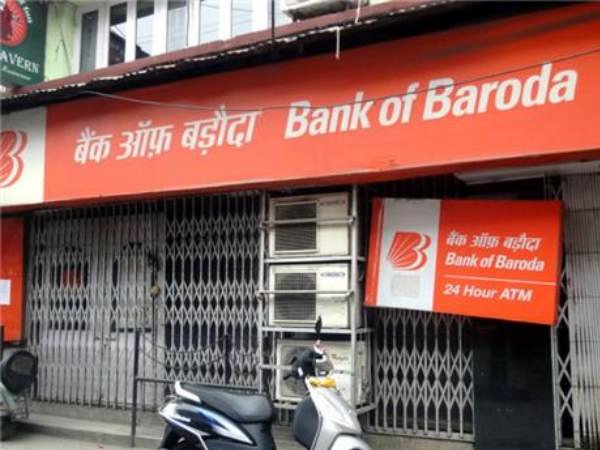State Bank of India (SBI) on Wednesday increased the MCLR-linked loans by 10 bps across the overnight and up to three year category of loans — varying from 7.95 per cent to 8.70 per cent, effective February 15.
Read More:- TCS Salary Hike: Top-Performing Employees Likely To Get 12-15% Increment, Rest Up To 8%, Says Report
New Delhi: Bank of Baroda and Indian Overseas Bank have increased their marginal cost of fund-based lending rates (MCLR), following a hike in the interest rates on loans and deposits by their largest public sector peer SBI. The latest hikes in the interest rates come days after the Reserve Bank of India (RBI) on February 8 increased the borrowing costs by 25 basis points (bps).
The RBI’s six-member Monetary Policy Committee had raised the benchmark repurchase or repo rate to 6.50 per cent in its latest bi-monthly policy review. This was the sixth straight increase in interest rates since May last year, and the cumulative hike now totals 250 bps. State-owned Bank of Baroda (BoB) has increased its MCLR by 5 bps across all tenors from February 12.
Read More:- Commercial calls may soon get different number series
The bank has revised one-year MCLR to 8.55 per cent from 8.5 per cent. The overnight, one-month and three-month MCLRs stand at 7.9, 8.2 and 8.3 per cent, respectively, according to its website. Another state-run lender Indian Overseas Bank (IOB) has raised its MCLR by up to 15 bps across all tenors.
Its one-year MCLR is up to 8.45 per cent from 8.30 per cent now. Similarly, one-month, three-month and six-month MCLRs are up by 15 bps to 7.9, 8.2 and 8.35 per cent, respectively, while its overnight, two-year and three-year MCLRs have been revised upwards by 10 bps. Both the banks have not increased their deposit rates yet.
State Bank of India (SBI) on Wednesday increased the MCLR-linked loans by 10 bps across the overnight and up to three year category of loans — varying from 7.95 per cent to 8.70 per cent, effective February 15. The nation’s largest lender also increased deposit rates by 5-25 bps effective February 15.
Read More:- How to transfer a driving license from one state to another?
With the revised rates, senior citizens will get 8.5 per cent on deposits of over five years, while others will get 5 bps more on three year funds and 25 bps on longer-term funds, according to the bank’s website. Yet the bank is offering only 2.70 per cent to its millions of savings bank depositors for balance less than Rs 10 crore and 3 per cent to those above Rs 10 crore. This is the lowest deposit rate.
Rate Hikes Are Only For Corporate Borrowers So Far
However, the rate hikes by SBI, Bank of Baroda and Indian Overseas Banks are only for corporate borrowers as the increases are applicable to loans linked to MCLR. Retail borrowers are spared for the time being, as personal, auto and home loans are linked to the EBLR or the external benchmark linked rates.
Read More:- Amazon, Google CEOs ‘Hint’ At More Layoffs Amid Economic Meltdown
While banks have almost fully passed on the 250-bps hike by RBI since last May to their borrowers, they have not yet increased deposit rates commensurately, leading to a funding gap and forcing them to borrow from the market.
For the fortnight ending January 13, 2023, credit growth rose 16.5 per cent annualised as against 10.6 per cent growth in deposits. Banks have been chasing deposits as the credit demand has been in high double-digits of averaging 16 per cent throughout the year but deposit has been lagging far behind.
In December 2022, too, SBI had increased deposit rates and introduced a new 400-day deposit scheme with interest rate of 7.1 per cent, the best for general public. In other slabs, SBI offers on deposits between one-year and less-than-two years a return of 6.8 per cent as against 6.75 per cent.
Also Read- What Is CASA Ratio And How Does It Affect Banks? All You Need To Know
While in the two- to three-year category, deposits fetch 7 per cent now, up from 6.75 per cent. Deposits above three years earn 6.5 per cent interest now, up from 6.25 per cent earlier. Banks price their loans primarily on two metrics: the external benchmark linked to repo rate or the open market rate of Mibor (Mumbai interbank offer rate), and the MCLR.
Implemented since April 2016, the MCLR is the minimum interest rate below which banks cannot lend. Banks calculate all operating costs as a percentage of marginal cost of funds for computing the MCLR. Under the MCLR regime, banks decide on the interest rate at which they will offer to borrowers on the basis of the marginal cost at which they get funds, through funds and by borrowing from the RBI.
Also Read– From PF Settlement, Pension To Nomination: 5 Types Of Provident Fund Forms
To further improve pricing transparency and the transmission of repo rate to banks’ lending and deposit rates, the RBI in October 2019 introduced the external benchmark linked lending rate (EBLR) system. Banks now offer lending rates which are linked to the RBI’s repo rate or yields on treasury bills. Any change in repo rate immediately gets reflected in the banks’ lending rate.





































